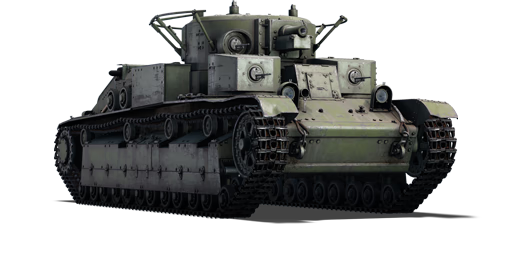The T-28 (1938) was a Soviet medium tank developed in the early 1930s as a complement to the heavier T-35 tank, sharing turret and hull design as well as partially the armament. The T-28 was also influenced by the British Vickers A1E1 Independent multi-turreted tank. The T-28 featured three turrets, two armed with 7.62 mm DT machine guns and a third with a 76 mm KT-28 howitzer and coaxial DT machine gun. The role of the T-28 was to provide infantry support, while the BT series tanks were to deal with enemy armour.
It was introduced in Update "Ixwa Strike". This production T-28, unlike its following variants (T-28 and T-28E), is equipped with a KT-28 howitzer with only 34 mm of penetration at 500 m distance with its APHEBC shell, and was primarily used as an infantry support tank. The tank itself is quite mobile for its size and weight, as well as having a decent top speed of 40 km/h. The armour is not particularly strong, and the six crew members being tightly packed together in the hull leave the tank vulnerable to being destroyed in a single well-aimed shot.















